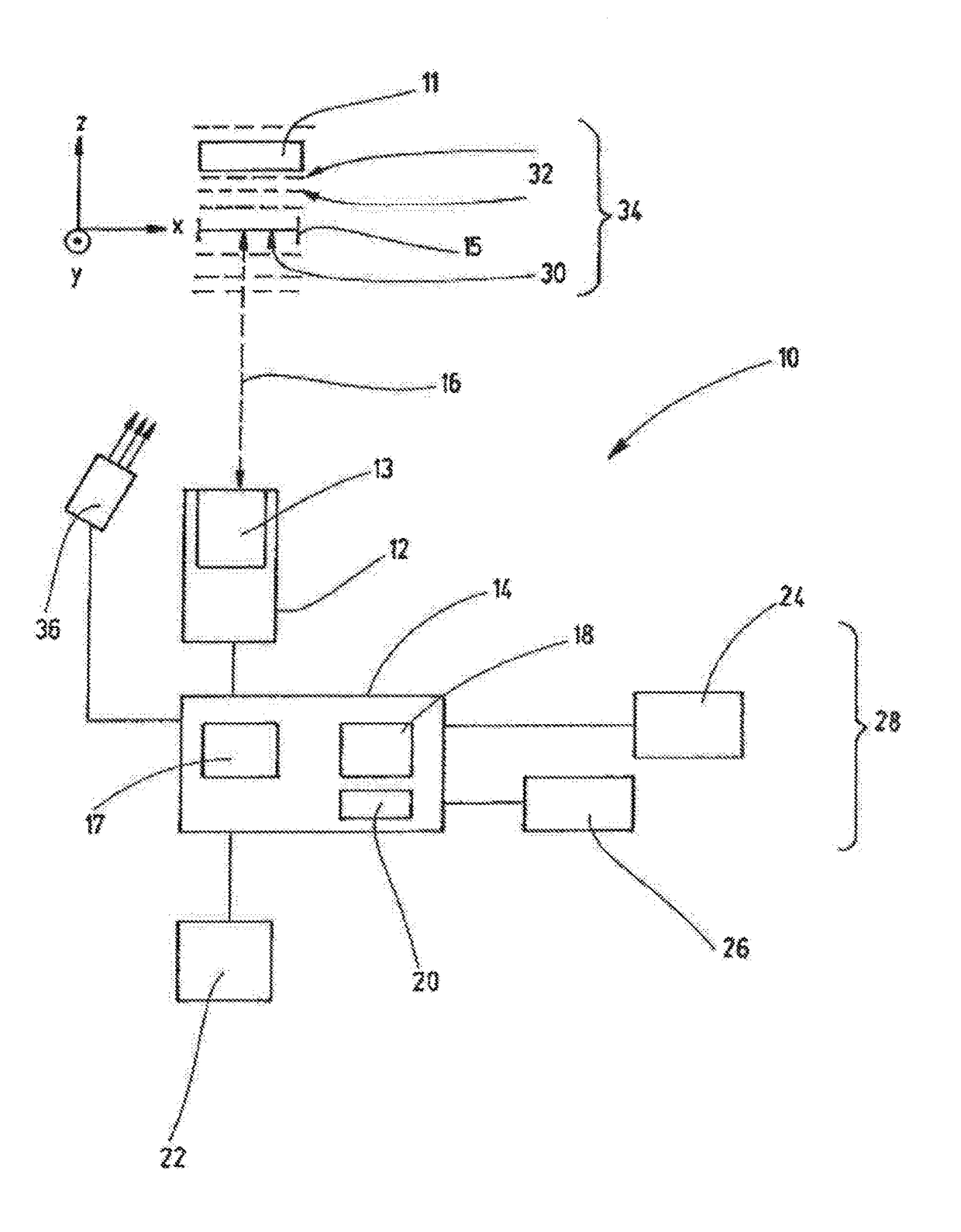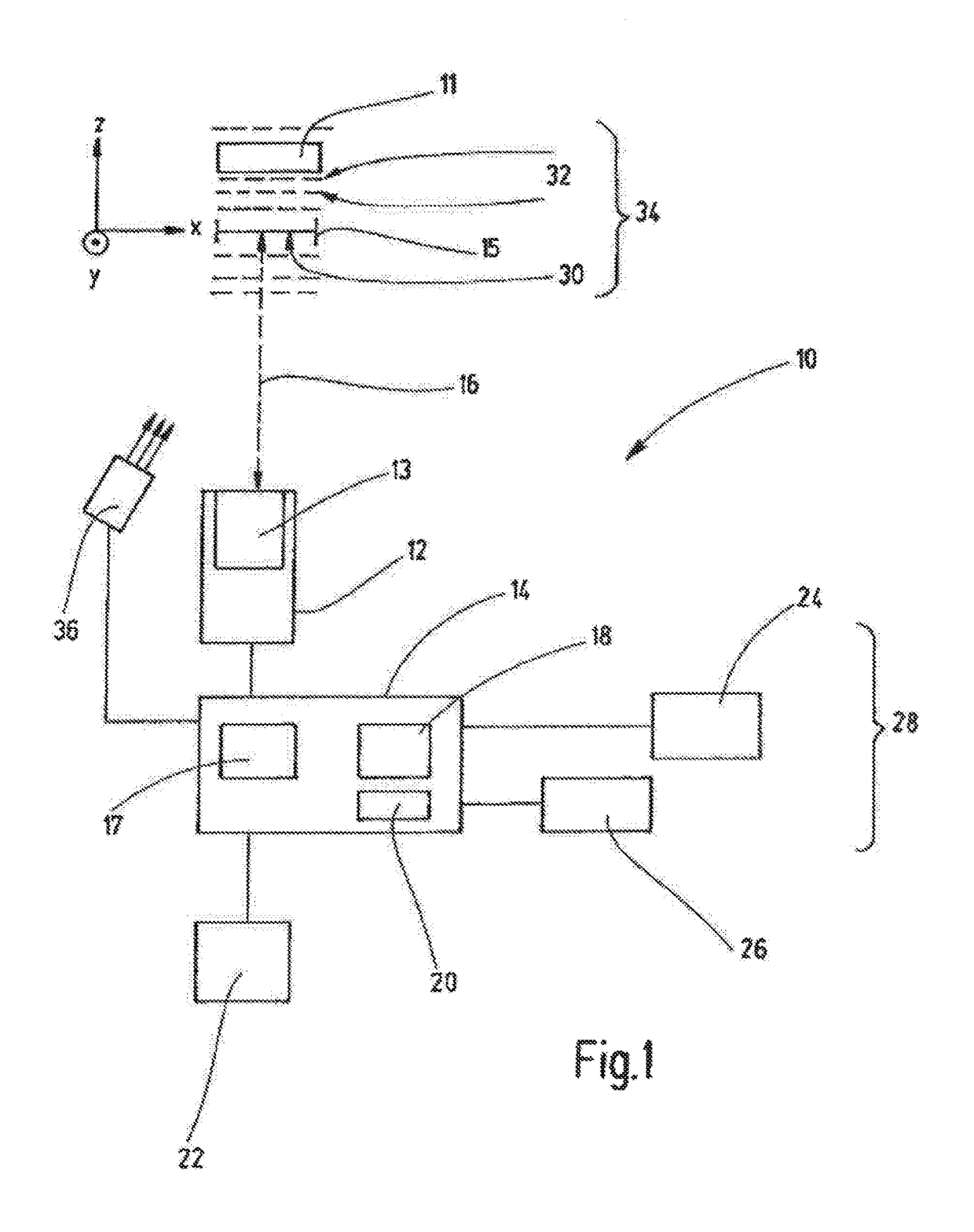Image recording simulation in a coordinate measuring machine
a technology of image recording and coordinate measuring machine, which is applied in the field of image recording simulation in a coordinate measuring machine, can solve the problems of just usable measurement and a high degree of experience, and achieve the effect of improving the rendering step and improving the quality of calculations
- Summary
- Abstract
- Description
- Claims
- Application Information
AI Technical Summary
Benefits of technology
Problems solved by technology
Method used
Image
Examples
first embodiment
[0089]FIG. 2 shows a method for optimizing an illumination of a measurement object in a coordinate measuring machine. The method is identified generally by the reference sign 40.
[0090]After the start, there is carried out firstly a step 42 of providing a first data set representing a model of the measurement object 11, a second data set representing a model of an illumination 36 of the measurement object 11, and a third data set representing a model of an optics 13 of the optical sensor 12.
[0091]Afterward, there is carried out a step of simulating 44 at least one virtual image of the measurement object 11 imaged onto the optical sensor 12 by rendering on the basis of the first data set, the second data set and the third data set. Afterward, in one configuration, the step of setting 46 the illumination of the measurement object 11 on the basis of the at least one simulated virtual image of the measurement object 11 may then be carried out directly.
[0092]In this way, the setting metho...
second embodiment
[0096]FIG. 3 shows one possible second embodiment of the method 40.
[0097]Firstly, identical steps 42 and 44 are carried out. Afterward, a step 48 involves ascertaining the quality of the illumination of a measurement object by determining a value of a parameter representing the quality from at least one of the at least one rendered virtual image.
[0098]A comparison of said parameter with a limit value follows in a step 54. If the interrogation is negative, the second data set, i.e. the illumination setting, is varied and the step of simulating 44 and ascertaining 48 is repeated. If the interrogation is positive, afterward step 46 is performed with the settings and the ascertained setting of the illumination of the measurement object on the real coordinate measuring machine 10 is carried out.
[0099]FIG. 4 shows one embodiment of a method 60 for simulating an imaging on an optical sensor of a coordinate measuring machine 10 for inspecting a measurement object 11.
[0100]Firstly there is c...
fourth embodiment
[0110]However, FIG. 7 also shows the method 60.
[0111]Firstly, in a step 84 by means of a measurement, for example by means of a wavefront aberrometer, the aberration of the lens or of the optics of the coordinate measuring machine is determined and stored for example in the form of a Zernike polynomial.
[0112]The step of providing 62 can thus be effected as described above. Afterward, at least one real image may be recorded in a step 86, in order to support step 64 of rendering. A step of rendering is to be carried out for example using the at least one real image as a starting value and a phase retrieval.
[0113]Subsequently, in a step 88, the at least one real image is then fitted into the image stack rendered step 64 and the aberrations are subtracted from the corresponding virtual images. Deviations remaining between the real image and the corresponding virtual image may likewise be ascertained and then taken into account when determining the image having a best image recording set...
PUM
 Login to View More
Login to View More Abstract
Description
Claims
Application Information
 Login to View More
Login to View More - R&D
- Intellectual Property
- Life Sciences
- Materials
- Tech Scout
- Unparalleled Data Quality
- Higher Quality Content
- 60% Fewer Hallucinations
Browse by: Latest US Patents, China's latest patents, Technical Efficacy Thesaurus, Application Domain, Technology Topic, Popular Technical Reports.
© 2025 PatSnap. All rights reserved.Legal|Privacy policy|Modern Slavery Act Transparency Statement|Sitemap|About US| Contact US: help@patsnap.com



